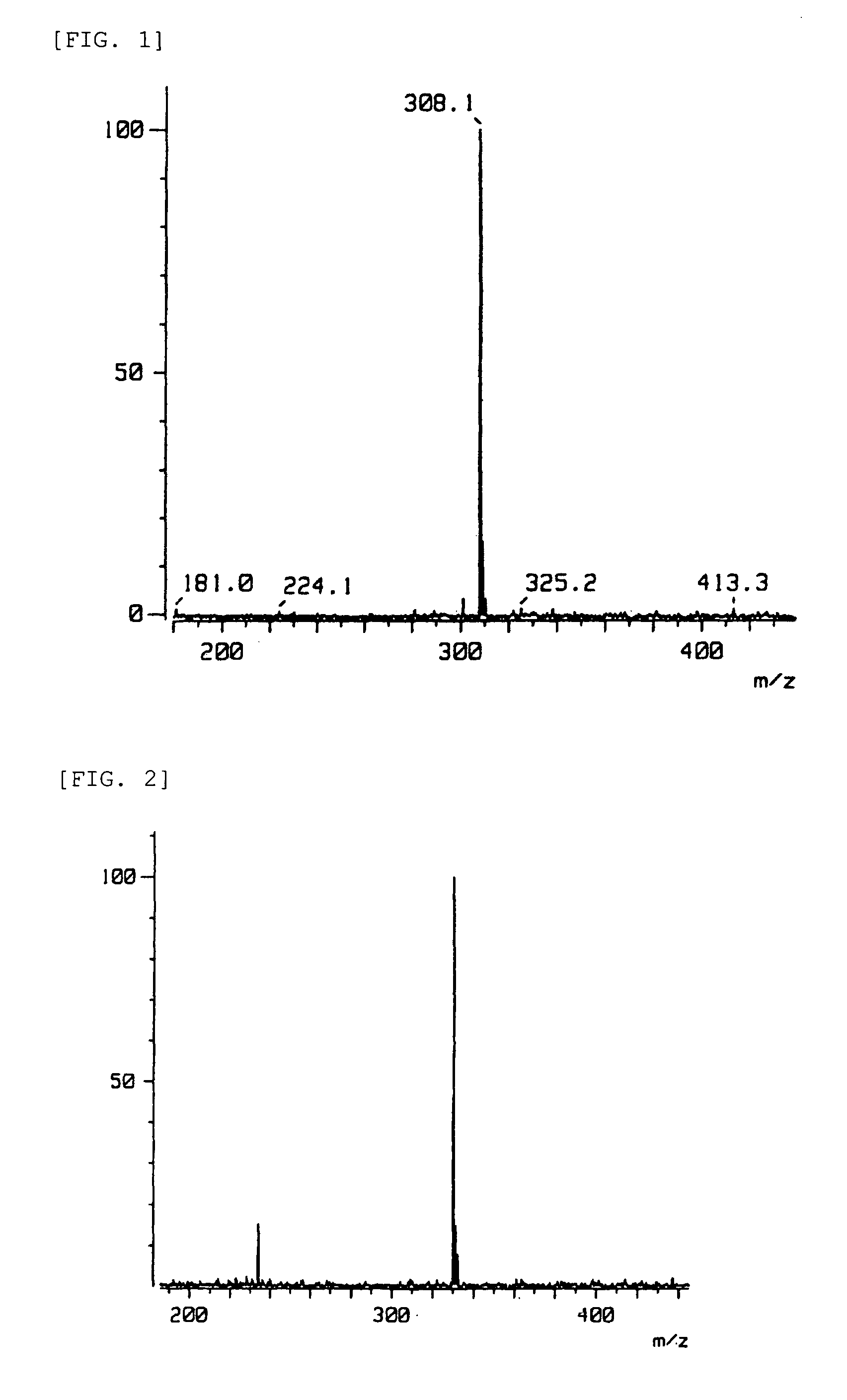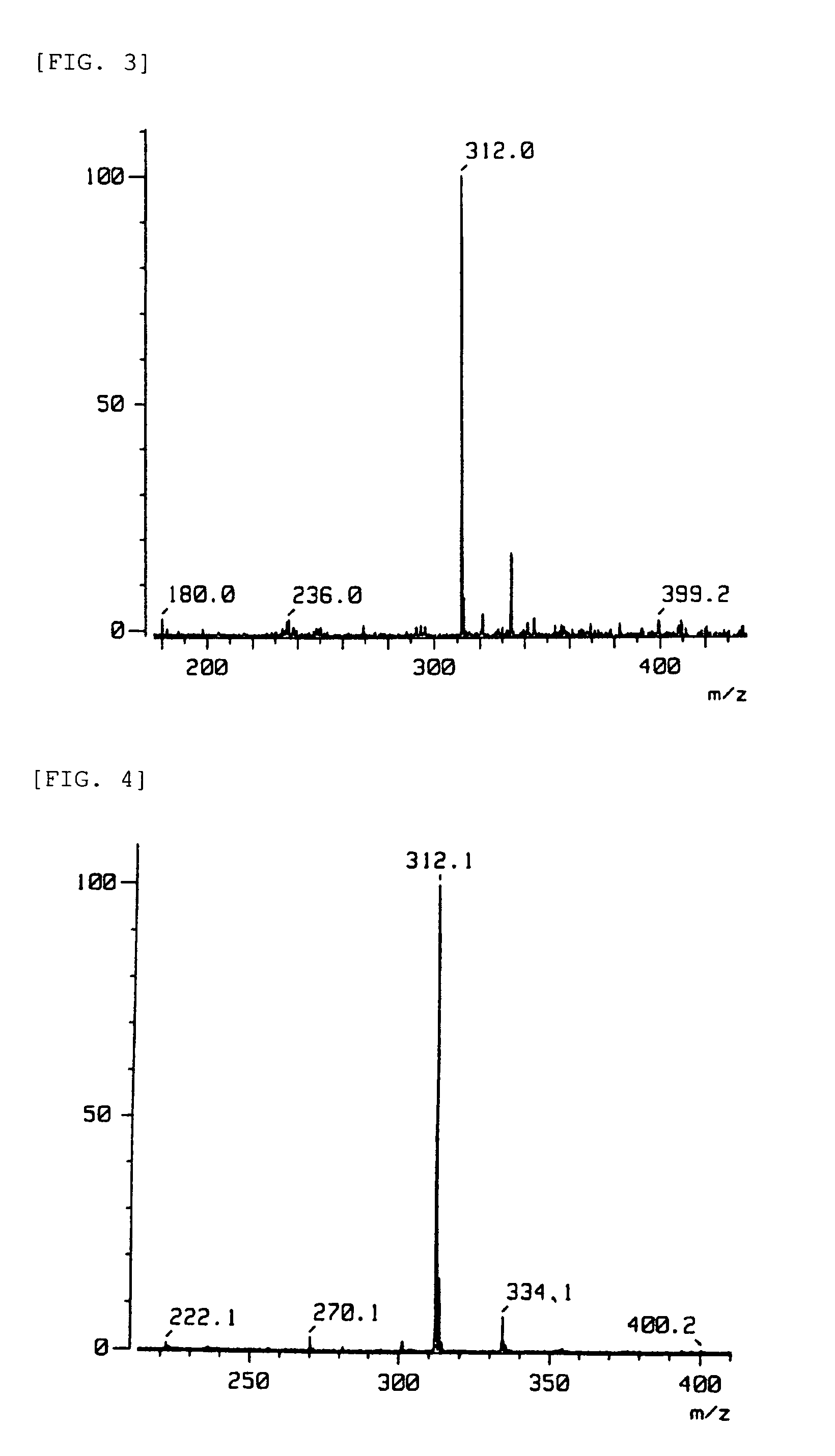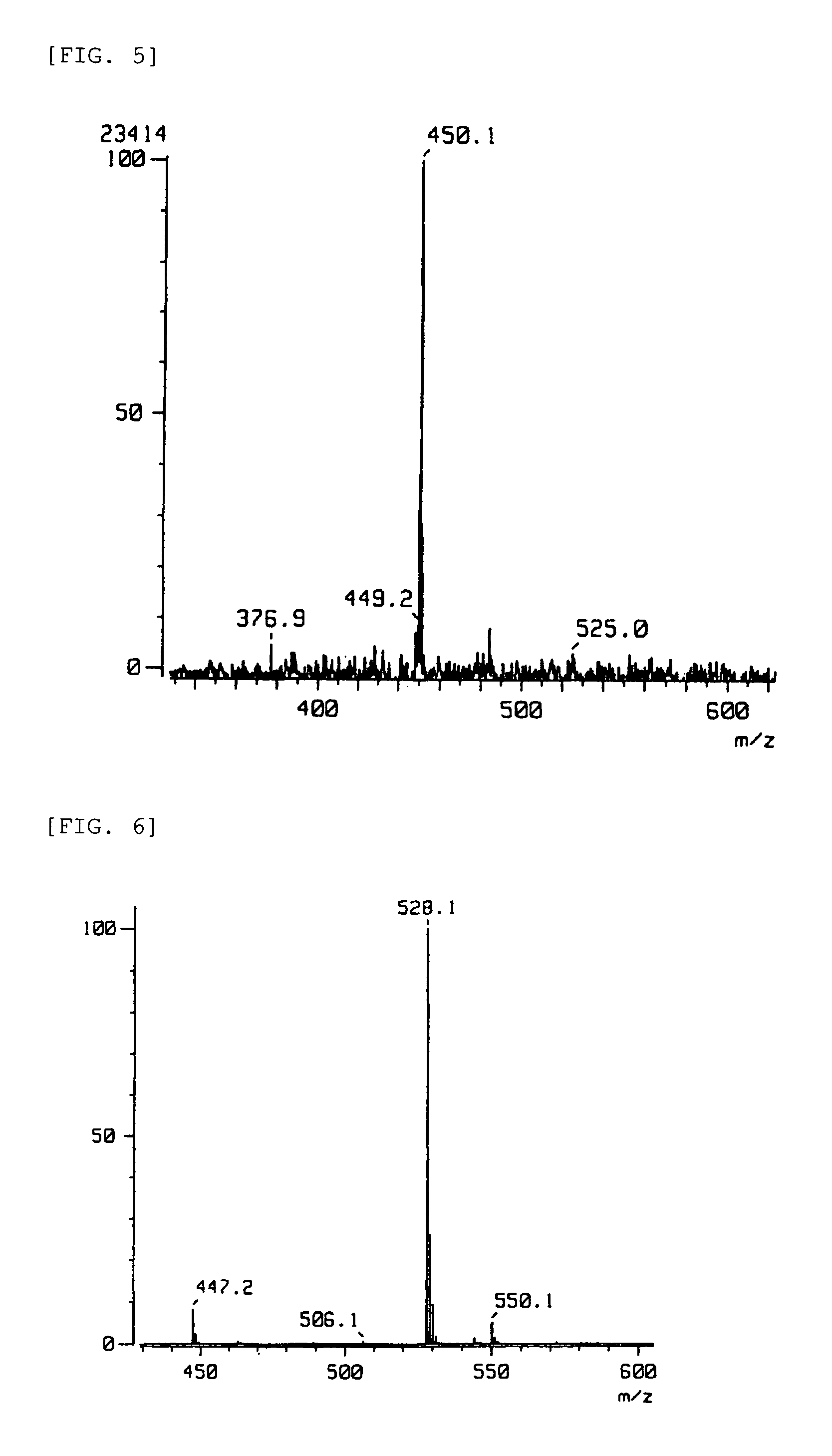Therapeutic agent for neurodegenerative disease
a neurodegenerative disease and therapy agent technology, applied in the field of parkinson disease treatment drugs, can solve the problems of dyskinesia and adversely aggravated symptoms
- Summary
- Abstract
- Description
- Claims
- Application Information
AI Technical Summary
Benefits of technology
Problems solved by technology
Method used
Image
Examples
production example 1
[0084]Compounds 1 to 6 with the formulae below were prepared as compounds that bind to the DJ-1, compound 7 with the formula below as a compound with low binding strength to DJ-1, and compound 8 with the formula below as a compound that does not bind to DJ-1 to be used in the Examples.
[0085]
[0086]Sources or production processes of the compounds:[0087]Compounds 1 to 4 and 7: Prof. Kosaku Hirota, Laboratory of Mechanical Chemistry, School of Pharmacy, Aichi Gakuin University.[0088]Compound 5: Prof. Toshio Honda, Faculty of Pharmaceutical Science, Hoshi University.[0089]Compound 6: Prof. Hristo Daskalov, Medicinal Chemistry, University of Sofia.[0090]Compound 8: Prof. Yoshiteru Oshima, Laboratory of Natural Products Chemistry, Graduate School of Pharmaceutical Science, Tohoku University.[0091]Compound 5: The phenethylamine (I) of the formula below (1.0 mol) was dissolved in benzene, and the carboxylic acid (II) of the formula below (1.1 mol) was gradually added thereto at room temperat...
example 1
[0100]In this example, the effect of compounds 1 to 8 in suppressing cell death of SH-SY5Y human neurons was examined.
[0101]SH-SY5Y human neurons (American Tissue Culture Collection, USA) were plated on a 96-well plate, and cultured to 80% confluency.
[0102]Compounds 1 to 8 in sterile aqueous solutions were individually added thereto at a sample concentration of 1 μM, or sterile water was added as a control.
[0103]24 hours after the addition of compounds 1 to 8 or sterile water, 6-hydroxydopamine (PBS solvent) (Wako Pure Chemical Industries, Ltd.) was added to each at a 6-hydroxydopamine concentration of 100 μM, or the same amount of PBS (containing no 6-hydroxydopamine) was added. Furthermore, 40 hours after the addition of 6-hydroxydopamine, Cell Counting Kit-8 was added for carrying out an MTT assay.
[0104]After 3 hours, a viable cell count was measured by measuring the absorbance at wavelength of 450 nm. For each of compounds 1 to 8 and the control, the viability was obtained from ...
example 2
[0106]In this example, the effect of compounds 1 to 5 in eliminating hydrogen peroxide was examined.
[0107]SH-SY5Y human neurons were plated onto a 10 cm dish and cultured to 80% confluency. Compounds 1 to 5 individually were added at a concentration of 10 μM, or sterile water was added. 24 hours after the addition of the compounds or sterile water, hydrogen peroxide was added at a concentration of 50 μM. 1 hour after the addition of hydrogen peroxide, the fluorescent dye DCFH-DA (Dichlorofluorescein diacetate) was added, and incubated for 15 minutes. The cells were collected, the fluorescence intensity was measured by FACS, and the amount of hydrogen peroxide in the cells was determined.
[0108]The measurement results are shown in FIG. 10. In all cases, it can be seen that when the compound and hydrogen peroxide were added, the fluorescence intensity was weak, that is, the amount of hydrogen peroxide was small, compared with a case in which only hydrogen peroxide was added.
PUM
| Property | Measurement | Unit |
|---|---|---|
| acceleration voltage | aaaaa | aaaaa |
| temperature | aaaaa | aaaaa |
| flow rate | aaaaa | aaaaa |
Abstract
Description
Claims
Application Information
 Login to View More
Login to View More - R&D
- Intellectual Property
- Life Sciences
- Materials
- Tech Scout
- Unparalleled Data Quality
- Higher Quality Content
- 60% Fewer Hallucinations
Browse by: Latest US Patents, China's latest patents, Technical Efficacy Thesaurus, Application Domain, Technology Topic, Popular Technical Reports.
© 2025 PatSnap. All rights reserved.Legal|Privacy policy|Modern Slavery Act Transparency Statement|Sitemap|About US| Contact US: help@patsnap.com



